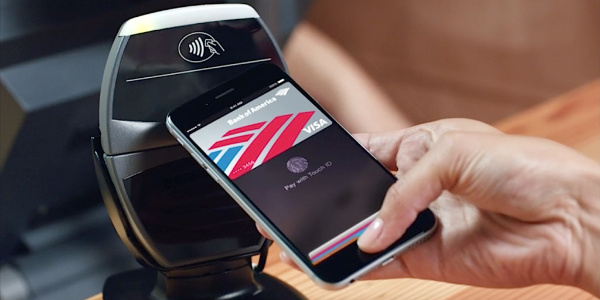Mobile Pay enthusiasts say using cash ‘slows down’ checkout

The wearables market hasn’t quite reached mainstream adoption, but we’re getting closer and closer to that point with each passing day.
Despite the fact the number of wearables with payment capabilities is still quite low, a recent study by PayPal showed 45 percent of Canadians believe its citizens are ready to embrace new methods of payments, including payments from wearable devices.
Fifty-one percent of those surveyed reported they had heard of wearable technology, and an additional 16 percent confirmed they were aware of wearable technology once it was described to them.
Those interested in payments via wearables listed not having to carry a wallet or phone and having everything in one place as some of the benefits of paying with a device that’s attached to your body. Not having to worry about losing the device and being hands-free also made the list.
Regarding mobile payments, of the 1,504 people surveyed, 23 percent said they have used their phone to make purchases in store. That number rises to 29 percent when asked if they’ve used their phone to buy something online while on the go.
Those using mobile payments found the experience to be positive, with 65 percent of respondents agreeing the process is quick and effortless. Almost half wish they didn’t have to carry both their wallets and phones, and 25 percent get frustrated when people paying with cash or cards slow down the checkout process at the point of sale.
Some Canadians are even ready to move completely beyond the need to carry any device, be it cash, card or phone. Thirty-five percent say they would use an Internet-enabled car that paid for gas at the pump, and 22 percent want an Internet-enabled refrigerator to pay for groceries direct from the merchant.
Twenty-two percent would use facial recognition or retina scanners to pay in-store, and 18 percent would get chips implanted in their fingers for completely contactless payments.
Wearables, mobile and other alternative forms of payment are clearly of interest to our friends to the north. As awareness, curiosity and willingness to try out these new technologies grows globally, credit unions should consider their own preparedness to be a player in the alternative payments arena.
The difference in usage percentages and interest in this new technology is probably driven as much by a generational difference than the ease and convenience the technology is perceived to bring. Wearables, although interesting, must be something you want to wear every day in all circumstances. Otherwise it just becomes cool, and having something cool is great for a short period.
New methods of paying are increasing what, how, when and where a person can pay for all kinds of things. I’m not sure any of these trends will ultimately replace a physical card or cash. What cash and cards provide today is universal, consistent and non-discriminatory access for consumers to perform various types of commerce. To become mainstream, all other payment solutions must equal, if not exceed, what cash and cards currently provide.





